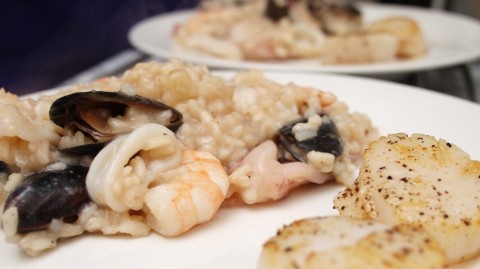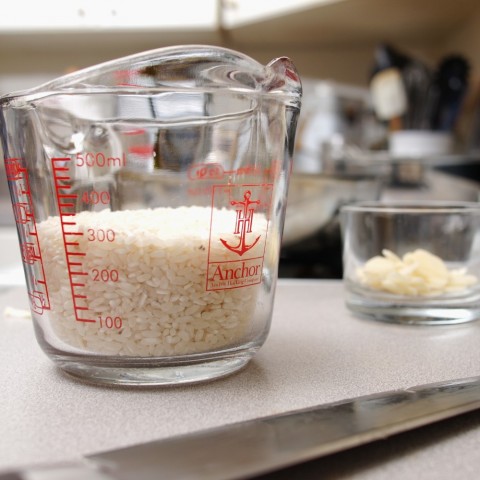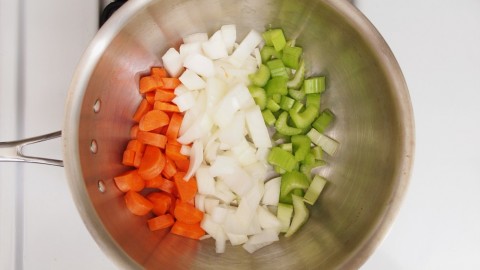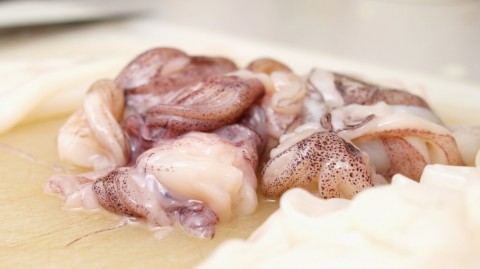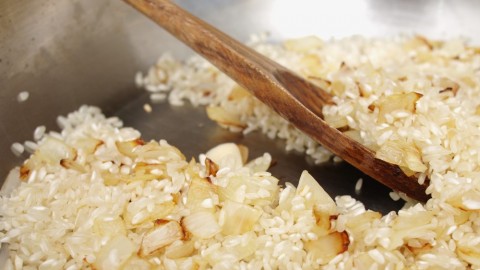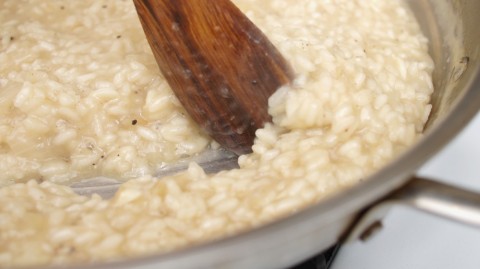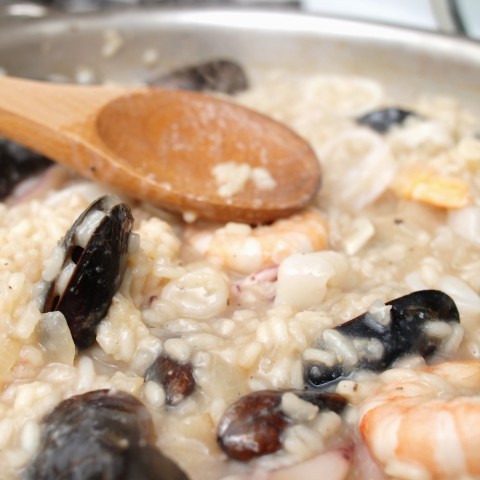Risotto is a dish on which Sarah and I disagree.
For her, the pinnacle of rice is a long-grain variety like basmati, cooked dry and fluffy, firm but done, with enough nutty flavor to be delicious alone, but better suited to be a substrate for curry, or stew, or coq au vin. Risotto is okay, she tells me. But it seems like an awful lot of fuss to achieve a taste and texture that is not — in her opinion — wholly pleasant, anyway.
To me — well — I like rice both ways. Readily, I will admit that I am a sucker for perfect Indian rice, dry and tender and subtly perfumed. But there is something special — rare, and rich, and luxurious — about risotto. I am fond of its creaminess, thick and buttery, born from short-grain rice’s natural starch rather than any added dairy. But more than that, I like the grain of the rice itself. It puts me in mind of the brushstrokes of an oil painting — visible but blunted, one kernel bleeding into the next, revealing the textured image of the dish as a whole.
And yet — Sarah is right. Risotto is a fuss. And for that reason, I don’t actually make it all that often.
There is a school of thought out there that contends that one can make an easy risotto — a ‘risotto light.’ It contends that one may be able to make it by just stirring the rice occasionally, or by adding all the liquid at once. It contends that risotto is ultimately just another pilaf.
But I scorn that point of view. One cooking podcast to which I used to listen suggested that while there are shortcuts to risotto — while a restaurant will cook it most of the way ahead of time, for instance, and then finish it to order — the best risottos are always homemade. And they always take time. And they are always a labor of love. Because seriously: why else would you stand over rice, constantly stirring it in one direction for more than an hour, in the age of the rice cooker?
I’d agree with that. I get in the mood to make risotto in part because I love the product. But to an even greater degree, I make it because I love the process. I love the idea of a dish that demands that I be attentive in the kitchen, that insists that I cannot walk away, or go make some salad dressing, or wash a load of dishes while it cooks. Risotto, to my mind, is kind of like meditation, in that it is superficially a simple task, but it is one that requires concentration, and a kind of devotion that temporarily excludes more than the most passing attention to what’s happening in the outside world.
What I’m saying, I guess, is that today’s recipe is simultaneously simple and difficult. It will require more of you in the kitchen than most of the recipes I post here. But it also offers a double reward. On the one hand, the end result is a delicious seafood risotto that will be sure to impress your friends around the table. And on the other, the process itself should bring you a kind of joy.
Sarah might not get risotto, but you should. Make risotto because you love to eat it. But even more — make it because you love to cook.
For the Shrimp Stock:
Shrimp Shells (from the 1/2 lb of shrimp you’re using in the risotto)
8-10 cups Cold Water
2 Ribs of Celery, chopped
1 Carrot, chopped
1/2 Onion, chopped
2 tsp Dried Tarragon
1 tsp Dried Parsley
1 tsp Peppercorns
1 Bay Leaf
Salt
For the Risotto:
The Shrimp Stock
1 1/4 cups Arborio Rice
1 cup Dry Sherry (Fino goes particularly well with seafood)
1 lb Mussels
1/2 lb Shrimp, shelled
1/2 lb Squid, cut into small pieces
1/2 Onion, chopped fine
4 Cloves of Garlic, sliced thin
2 tbsp Thai Fish Sauce
Olive Oil
Pepper
Salt
To Make the Shrimp Stock: Shell the shrimp, and set the meat aside (in the refrigerator) for the risotto. To a three-quart saucepan, add the shrimp shells, carrot, onion, celery, herbs, peppercorns, and a sprinkle of salt. Fill the saucepan almost to the top with cold water and, over a burner on medium heat, bring to a high simmer (about 200F).
Turn the burner to low, and allow the mixture to simmer for about an hour, stirring occasionally. Then strain the stock through a fine-mesh sieve, and return it to the saucepan to continue to simmer.
To Make the Risotto: To the saucepan of stock, add the sherry and fish sauce, stir, and allow the liquid to return to a simmer.
Heat a sauté pan over medium flame. Lubricate generously with olive oil, and saute the onions with a bare sprinkling of salt until they turn translucent and just start to brown. Add the garlic and cook for about a minute more, then add the rice and cook, stirring, for about two more minutes — until the rice is completely coated in olive oil.
When the rice is coated, add one cup of the stock and a generous grind of pepper, and stir, gently and continuously, making a slow spiral from the outer edge of the pan toward the center. Stir constantly until the liquid begins to look scant, and then add another cup of stock and repeat. Continue stirring and adding liquid in like fashion for about an hour and ten minutes, or until the rice is completely cooked. If you start to run low on stock, add a cup of water or two to the saucepan.
You’ll know that the rice is done when — like pasta — its texture is firm, but it no longer sticks in your back teeth while chewing.
When the risotto is cooked, season to taste with salt and pepper, then add the shelled shrimp, squid pieces, and mussels. Cover the sauté pan, turn the heat to medium low, and allow the seafood to cook in the rice for 5-8 minutes, or until the shrimp is pink and all the mussels have opened.
Serve hot, accompanied by a chilled glass of dry sherry.
